
On one part of this diptych, supposedly written after 1479, Van der Gus gives his interpretation of the fall of Adam and Eve, on the other – depicts the mourning of Christ, but on the whole sets the viewer to reflect on the human sin and sacrifice necessary for his redemption. The Garden of Eden, in the center of which we see the carefully written Tree of Knowledge of Good and Evil, is a traditional image of a green paradise. Iris and the catchment, growing before Adam and Eve, are flowers that are associated with the Virgin Mary and the Holy Spirit.
Thus, the picture shows a hint of their future role in saving the sinful human race from the consequences of eating the forbidden fruit. According to the misogynistic medieval conception of Falseness, the serpent is attached to the lizard’s body and the female head. His exquisite hairstyle contrasts with Eve’s dismissed hair. ADAM AND EVE. According to the Old Testament, God created Adam from the dust of the earth in his own image and likeness and breathed life into it. Then he placed Adam in the Garden of Eden, forbidding eating fruits from the Tree of Knowledge. God created Eve from the rib of Adam so that she would be his wife. The serpent persuaded Eve to know good and evil by eating the forbidden fruit; Eva, in turn, convinced Adam to try this fruit.
At the same time, their eyes opened and, feeling shame, they covered their nakedness with fig leaves. As punishment for original sin, God expelled Adam and Eve from Eden. Creation, temptation and the Fall of Adam and Eve were popular stories in the fine arts of the Middle Ages and the Renaissance, because with their help one could express the need of people to atone for their sins through Christ. Paintings on these topics are often created in cycles.
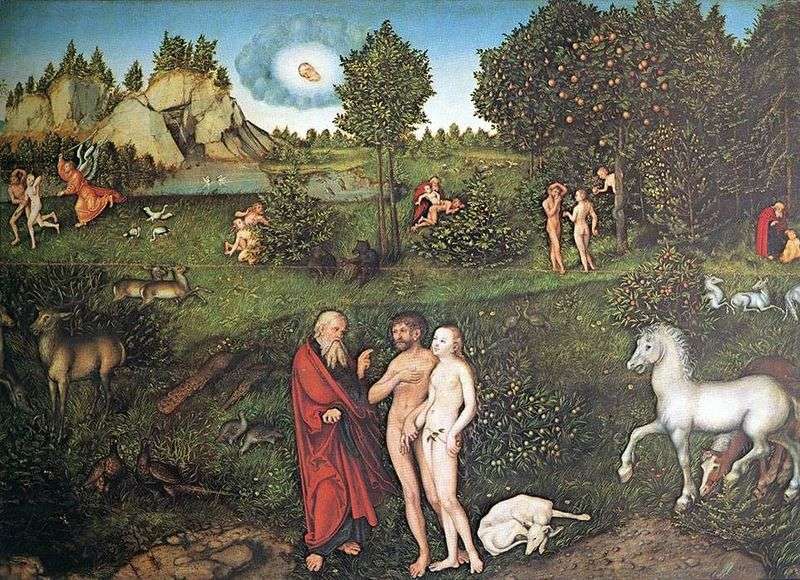 Eden by Lucas Cranach
Eden by Lucas Cranach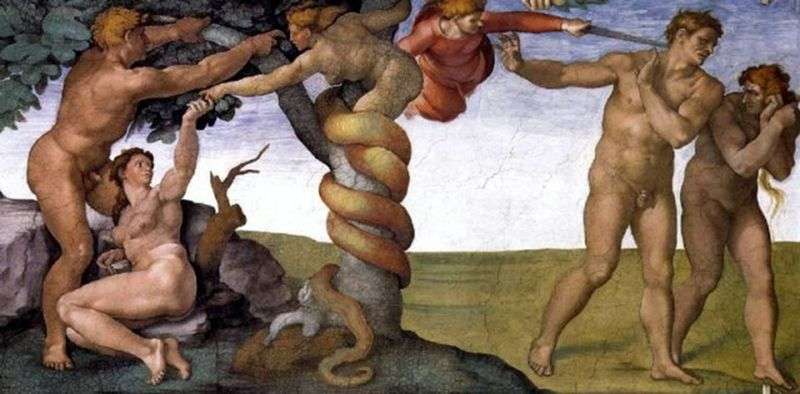 The Fall and Exile from Paradise by Michelangelo Buonarroti
The Fall and Exile from Paradise by Michelangelo Buonarroti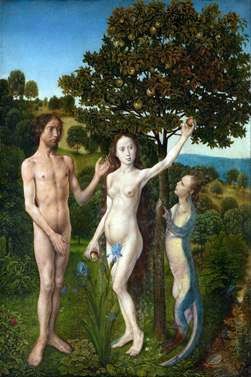 L’automne – Hugo van der Gus
L’automne – Hugo van der Gus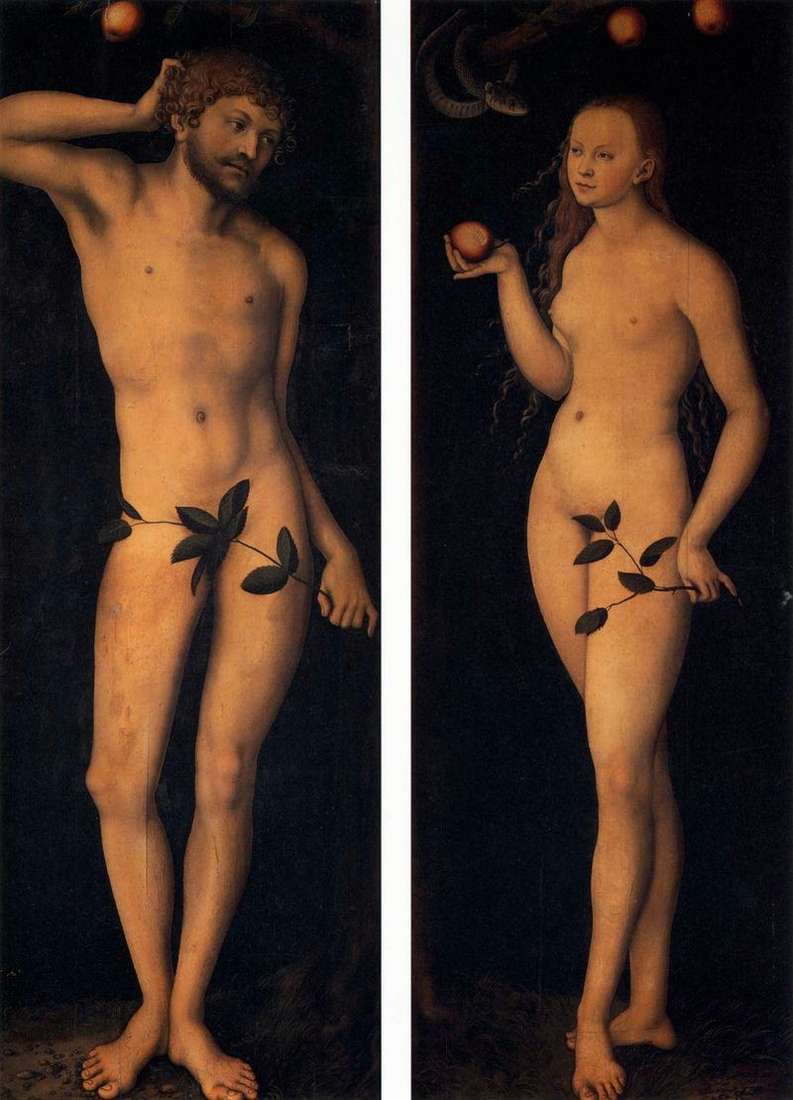 Adam and Eve by Lucas Cranach
Adam and Eve by Lucas Cranach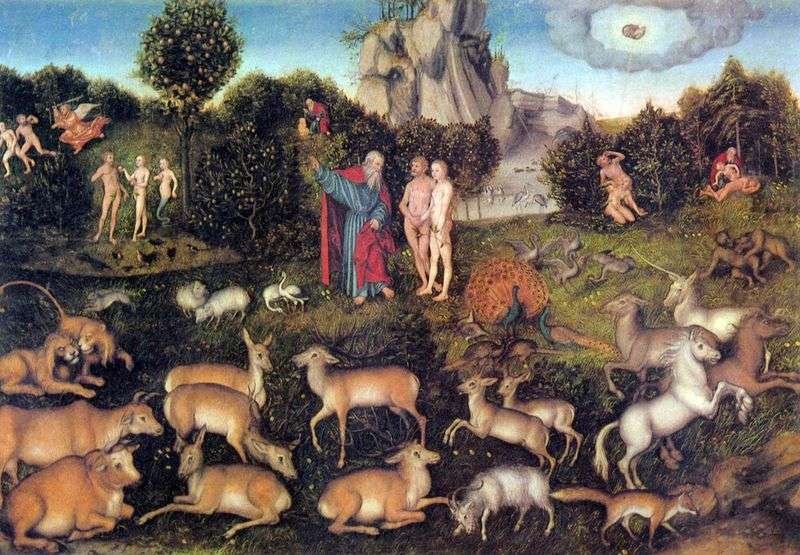 Paradise by Lucas Cranach
Paradise by Lucas Cranach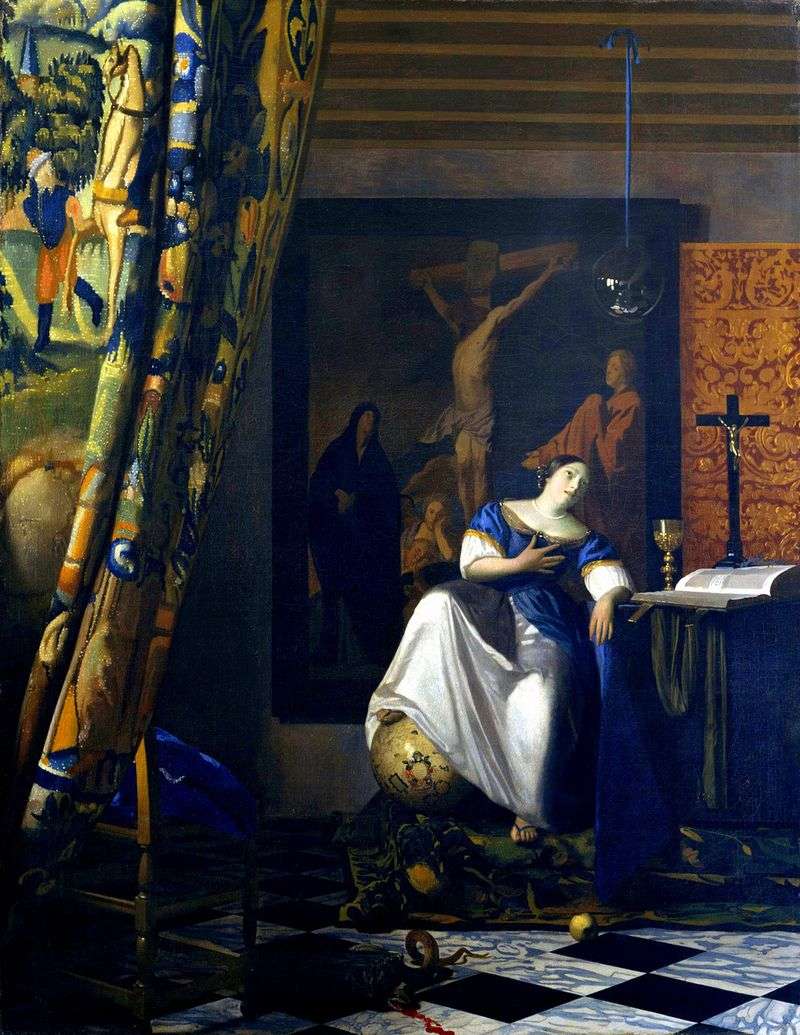 Allegory of Faith by Jan Vermeer
Allegory of Faith by Jan Vermeer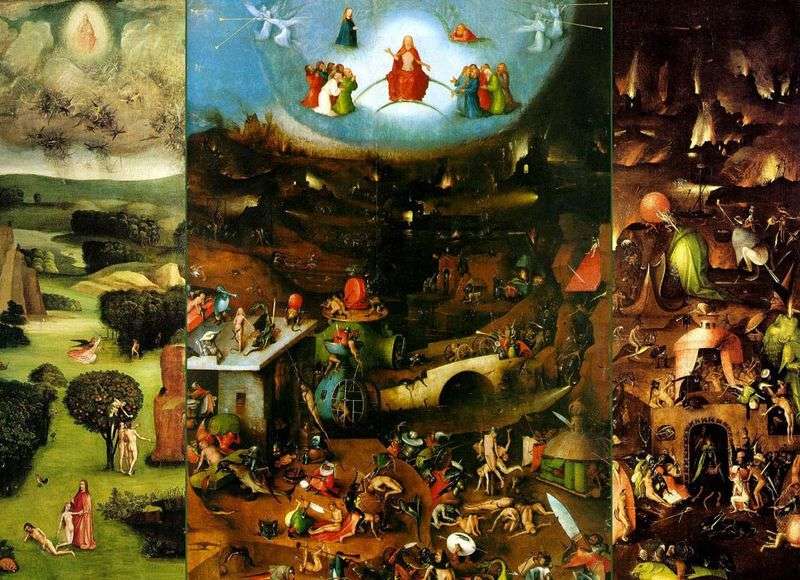 The Last Judgment by Hieronymus Bosch
The Last Judgment by Hieronymus Bosch The Battle of Hercules with Khozroi by Piero della Francesca
The Battle of Hercules with Khozroi by Piero della Francesca